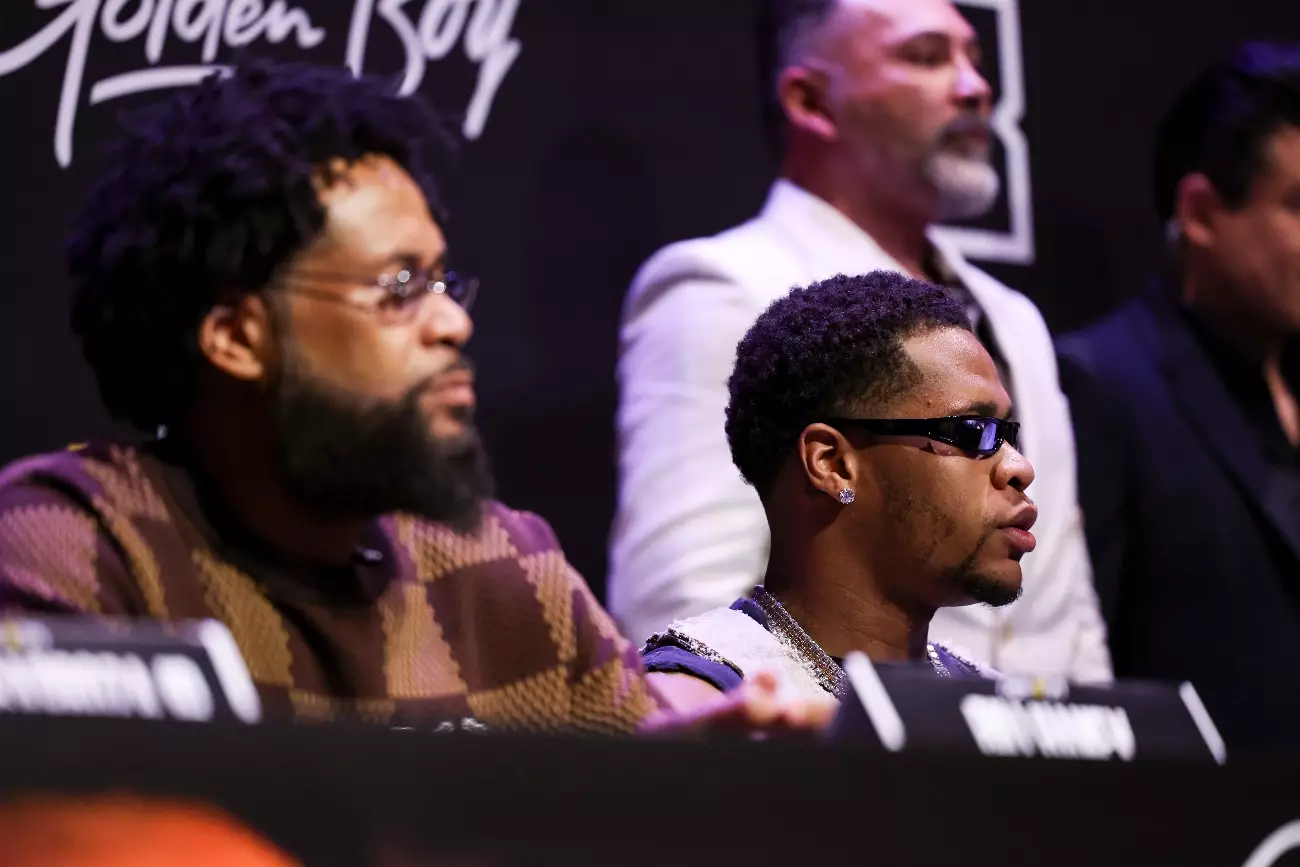The world of professional boxing has long been marred by allegations of performance-enhancing drug (PED) use, casting a shadow over the sport’s integrity. Recently, the focus has shifted to the ongoing legal battle between Bill Haney and his son Devin Haney against Ryan Garcia, who has been accused of using Ostarine, a banned substance. This situation not only raises questions about the specific fight outcomes but also potentially paves the way for future legal repercussions for fighters who choose to cheat.
In a statement confirmed by Bill Haney, the lawsuit filed against Ryan Garcia is still very much alive. The Haney family aims to take action that will resonate throughout the boxing community, illustrating the severe consequences that could follow if fighters choose to utilize performance-enhancing drugs. The pivotal moment came during a highly-anticipated bout on April 15, where Garcia triumphed over Devin Haney with a majority decision, managing to knock him down three times during the fight. Following the bout, the subsequent testing revealing Garcia’s positive result for Ostarine has led to a swirl of controversy and debate.
The Haneys believe that this illegal substance played a crucial role in Garcia’s victory, fundamentally arguing that without Ostarine, the outcome may have been vastly different. It raises an essential conversation about the integrity and fairness within boxing, particularly how substances like Ostarine can affect a fighter’s performance, speed, and recovery. While it has yet to be revealed how much financial compensation the Haneys are seeking, their motivations imply a necessity for accountability in the sport that continues to struggle with doping issues.
Even if the Haneys were to secure a substantial financial victory in this case, it may not translate into an easy road back to the ring for Devin Haney. Promoter Oscar De La Hoya announced a future date for Ryan Garcia’s return, quashing any immediate prospects for a rematch in 2025. Many fans speculate that Devin’s decision to remain inactive until a rematch is confirmed shows a strategic pause, fearing the risks of facing another opponent before potentially avenging his defeat against Garcia.
This situation leaves Devin at a crossroads. If the anticipated rematch does not occur, he risks losing significant financial opportunities to battle in the interim. Bill Haney remarked on his son’s technical adjustments in response to the fight, emphasizing the need to fortify against Garcia’s left hook. Yet, this raises poignant questions about the balance of strategy, readiness, and the psychological impact of previous losses.
The core of this conflict pivots around the implications of Ryan Garcia’s use of Ostarine, challenging the perception of skill versus chemical assistance in combating rivals. While some argue that Garcia’s inherent skill would have likely yielded a strong performance regardless of the Ostarine in his system, Bill Haney pushes back against that narrative. According to him, the advantages conferred by the substance could not be understated—better recovery rates and increased power create an uneven playing field that disrupts fairness in competition.
The notion that PED use undermines the essence of boxing resonates strongly with fans and fighters alike. Bill Haney’s commitment to pursuing this lawsuit is about more than just personal redemption; it’s a movement advocating for the sanctity of the sport. The Haneys are using their platform to champion change in boxing rules, aiming to create a deterrent for anyone contemplating the use of drugs for competitive advantage.
Bill Haney’s assertion that “there’s no place for drugs in boxing” embodies the increasing call for accountability in a sport often clouded by scandals. The lawsuit he and his son have initiated aims to set a legal precedent that will reinforce the message that illicit drug use will result in tangible consequences. This fight is more than just personal; it’s a fight for boxing’s reputation, integrity, and the well-being of future generations of athletes.
As this case unfolds, it may very well serve as a crucial turning point, establishing both a legal framework and a moral guideline to ensure that the sanctity of boxing is preserved. This case engages not only the Haneys and Garcia but also every athlete in the sport, emphasizing scrutiny and fairness in Dallas or Brooklyn, the ring or the courtroom.

